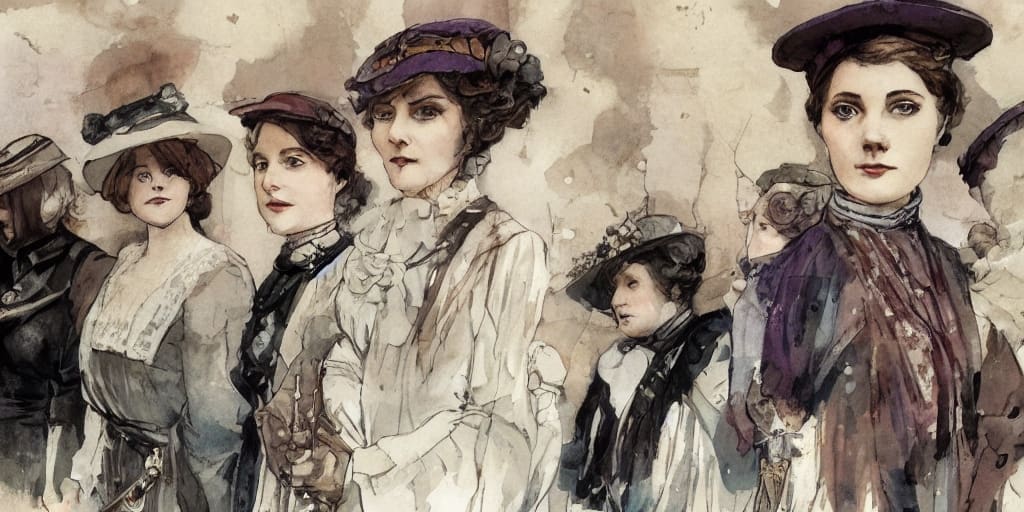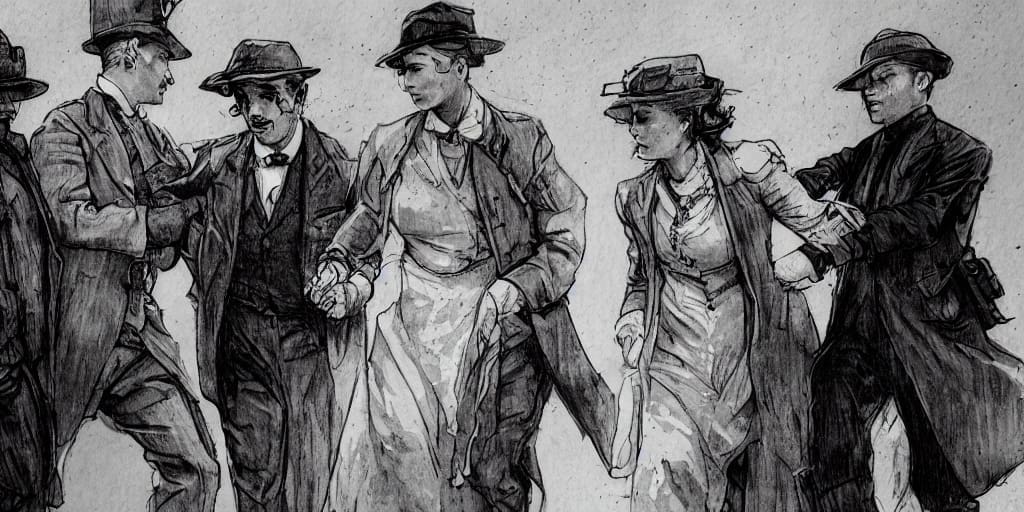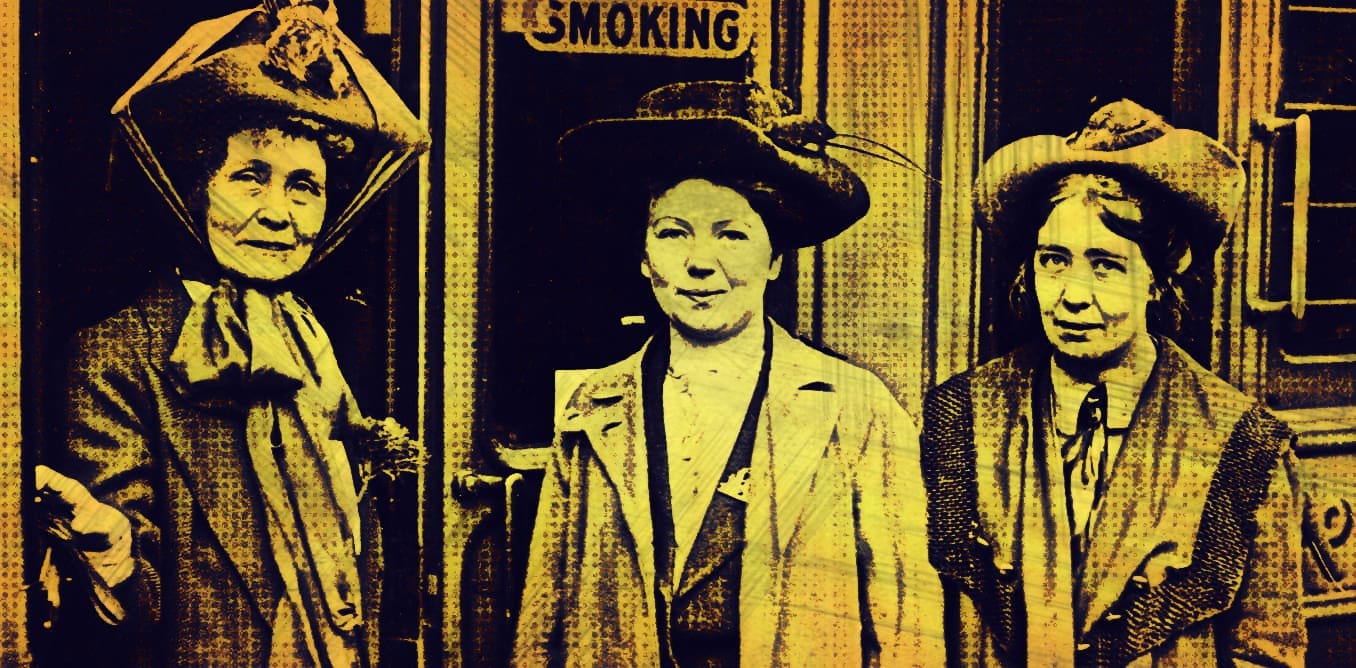The Suffragette Struggle for Women’s Rights
The Suffragette movement, which emerged in the late 19th and early 20th centuries, was a pivotal moment in the history of women’s rights. It represented a courageous and relentless struggle by women to secure the right to vote and to challenge deeply ingrained gender norms and discrimination. Here we explore the history and impact of the Suffragette movement, shedding light on its origins, key figures, tactics, and enduring influence on women’s rights and societal transformation.

Table of Contents
Origins of the Suffragette Movement
The roots of the Suffragette movement can be traced back to the mid-19th century when the first stirrings of women’s activism for suffrage began. In the United States, for example, pioneers like Susan B. Anthony and Elizabeth Cady Stanton laid the foundation for the movement with the Seneca Falls Convention in 1848, demanding women’s right to vote. Their efforts culminated in the ratification of the 19th Amendment in 1920, granting women the right to vote across the country.
In the United Kingdom, the Suffragette movement took shape in the late 19th century. The catalyst for this movement was the formation of the National Union of Women’s Suffrage Societies (NUWSS) in 1897, led by Millicent Fawcett. NUWSS adopted peaceful and constitutional means to advocate for women’s suffrage, using petitions, public meetings, and lobbying as their primary tools.
However, as years passed with little progress, some women grew impatient with the slow pace of change. This impatience led to the emergence of more radical elements within the movement, giving rise to the Suffragettes.

Key Figures of the Suffragette Movement
The Suffragette movement produced a cadre of determined and charismatic leaders who played pivotal roles in its development and success. Among them, Emmeline Pankhurst stands out as one of the most prominent figures. She founded the Women’s Social and Political Union (WSPU) in 1903, which became synonymous with the militant wing of the Suffragette movement. Pankhurst’s unwavering commitment to the cause and her slogan “Deeds, not words” encapsulated the radical spirit of the Suffragettes.
Emmeline Pankhurst (1858-1928): Emmeline Pankhurst, a pioneering force in the Suffragette Movement, was born in Manchester, England. Her pivotal role in the movement began with the establishment of the Women’s Social and Political Union (WSPU) in 1903. Embodying charisma and determination, Pankhurst advocated for more militant and confrontational tactics, coining the rallying cry “Deeds, not words.” Her leadership was instrumental in galvanizing public support for the suffrage cause. Despite facing numerous arrests and imprisonments, Pankhurst remained steadfast in her commitment, pushing the suffrage agenda to the forefront of political discourse and leaving an enduring legacy.
Christabel Pankhurst (1880-1958): Christabel Pankhurst, the eldest daughter of Emmeline, played a crucial role in the Women’s Social and Political Union (WSPU). She was a driving force behind the adoption of militant strategies to draw attention to the suffrage cause. Known for her charismatic speeches and organizational skills, Christabel was a central figure in suffragette activism. She actively participated in various campaigns, including the infamous window-smashing episodes that aimed to disrupt the status quo and demand political attention for women’s suffrage.

Sylvia Pankhurst (1882-1960): Sylvia Pankhurst, the second daughter of Emmeline, distinguished herself as a suffragette and socialist. Her contributions extended beyond women’s suffrage, encompassing broader social issues. Sylvia played a pivotal role in establishing the East London Federation of Suffragettes, which later evolved into the Workers’ Socialist Federation. Her emphasis on including working-class women in the suffrage movement reflected a commitment to addressing the intersectionality of gender and class issues.
Emily Davison (1872-1913): Emily Davison, a prominent suffragette, gained notoriety for her extreme acts of protest. In 1913, she sacrificed her life during the Epsom Derby by stepping in front of King George V’s horse. Davison’s dramatic actions garnered widespread attention and became emblematic of the suffragettes’ dedication to their cause. Her death had a profound impact, serving as a catalyst for increased public sympathy toward the suffragette movement and reinforcing the urgency of women’s suffrage.
Annie Kenney (1879-1953): Annie Kenney, a working-class suffragette, emerged as a prominent figure within the WSPU. Known for her tireless activism and passionate speeches advocating for women’s rights, Kenney helped bridge the gap between different social classes within the suffrage movement. Her confrontations with the police and multiple imprisonments underscored her dedication to the cause. Kenney’s commitment reflected the diversity within the suffragette ranks and the collective effort to bring about political change for women.
These key figures, each contributing their unique strengths and perspectives, collectively shaped the Suffragette Movement. Their unwavering commitment, resilience in the face of adversity, and strategic contributions left an indelible mark on the history of women’s rights, laying the foundation for subsequent advancements in political and social equality.

Tactics of the Suffragettes
The Suffragettes adopted a range of tactics to draw attention to their cause and pressure the government into granting women the right to vote. These tactics ranged from peaceful demonstrations to more confrontational and militant actions. Some of the key tactics employed by the Suffragettes included:
Public Demonstrations: Suffragettes employed large-scale public demonstrations as a central tactic to make their voices heard. One notable event was the Women’s Suffrage Procession in Washington D.C. in 1913. Organized by Alice Paul and the National American Woman Suffrage Association, it drew thousands of participants who marched down Pennsylvania Avenue, demanding the right to vote. The event garnered significant media coverage and marked a turning point in the visibility of the suffrage movement.
Civil Disobedience: Some Suffragettes engaged in acts of civil disobedience to protest the government’s reluctance to grant women the right to vote. One example is the Women’s Tax Resistance League, founded by Sylvia Pankhurst. Members refused to pay taxes, arguing that taxation without representation was unjust. This form of civil disobedience aimed to emphasize the urgency of women’s suffrage by directly challenging the financial system that excluded them from political decision-making.

Window Smashing: Suffragettes engaged in window-smashing campaigns as a symbolic and confrontational tactic. In 1912, Mary Leigh and Edith New smashed windows in the West End of London as a protest against the government’s lack of action on women’s suffrage. This direct action aimed to create disruption and draw attention to the suffragettes’ cause, using targeted property damage to make a political statement.
Hunger Strikes: Imprisoned Suffragettes, seeking to protest their confinement and draw attention to their cause, resorted to hunger strikes. The most renowned example is Emmeline Pankhurst’s hunger strike in 1909. Faced with force-feeding during her imprisonment, Pankhurst’s ordeal highlighted the suffragettes’ determination and the brutal methods employed by authorities to suppress their activism.
Arson and Bombings: While representing a minority within the movement, some militant Suffragettes resorted to more extreme measures, including arson and bombings. The most infamous incident was the burning of the unoccupied home of David Lloyd George, the Chancellor of the Exchequer, in 1913. Although such actions were controversial within the movement and faced criticism, they succeeded in garnering attention and putting pressure on the government to address the suffragettes’ demands.
These tactics, ranging from peaceful protests to more confrontational and militant actions, were integral to the Suffragette Movement’s strategy. The events resulting from these tactics not only drew attention to the cause but also contributed to the evolving narrative of women’s struggle for political equality during a critical period in history.

Impact of the Suffragette Movement
The Suffragette Movement, at its core, left an indelible mark on history by securing one of its primary goals – the attainment of women’s suffrage. The Representation of the People Act in 1918 marked a turning point, granting voting rights to certain women over the age of 30 in the United Kingdom. Subsequently, the Equal Franchise Act of 1928 expanded suffrage to all women over the age of 21, placing them on an equal footing with their male counterparts.
However, the impact of the Suffragette Movement extended far beyond the ballot box. By challenging traditional gender norms, the movement fostered a cultural shift that empowered women to become more politically active and engaged in public life. The newfound ability to vote marked not only a political milestone but also served as a catalyst for broader societal changes.
The Suffragette Movement’s influence was not confined to national borders. Its success inspired women around the world to embark on similar journeys, contributing to the global spread of feminism and women’s rights activism. The spirit of the suffragettes resonated across international boundaries, becoming a driving force in the broader struggle for gender equality.

As women gained the right to vote, they entered the political arena, advocating for policies that addressed women’s issues. The Suffragette Movement paved the way for increased female representation in government, leading to the introduction of legislation aimed at improving women’s rights, including issues such as reproductive rights, equal pay, and childcare.
Indirectly, the Suffragette Movement influenced legal reforms that improved the overall status of women. Changes in divorce and property laws reflected a broader societal shift toward recognizing women as independent individuals with legal rights. These legal reforms were integral components of the larger societal transformation that sought to address gender-based inequalities.
The Suffragette Movement’s legacy endures as a source of inspiration for contemporary women’s rights activism. The resilience and determination exhibited by the suffragettes continue to fuel ongoing efforts to confront gender disparities and advocate for equality. The Suffragette Movement stands not only as a pivotal chapter in history but also as a testament to the enduring human spirit in the relentless pursuit of justice and gender equity.
Browse 3800+ Books in Our PromisesBooks Bookshop
Discover more from PEN vs SWORD
Subscribe to get the latest posts sent to your email.

















































What do you think?